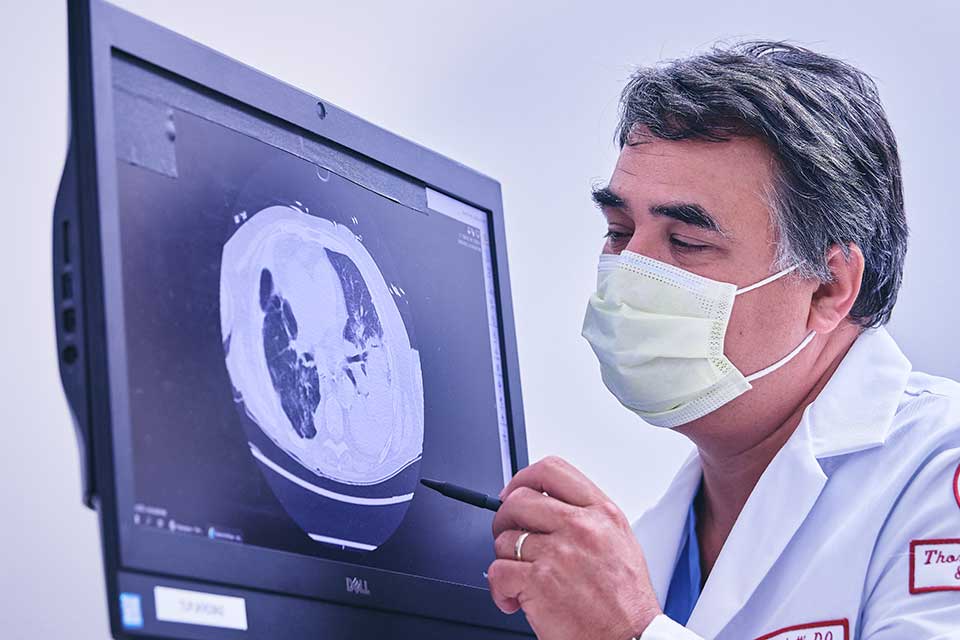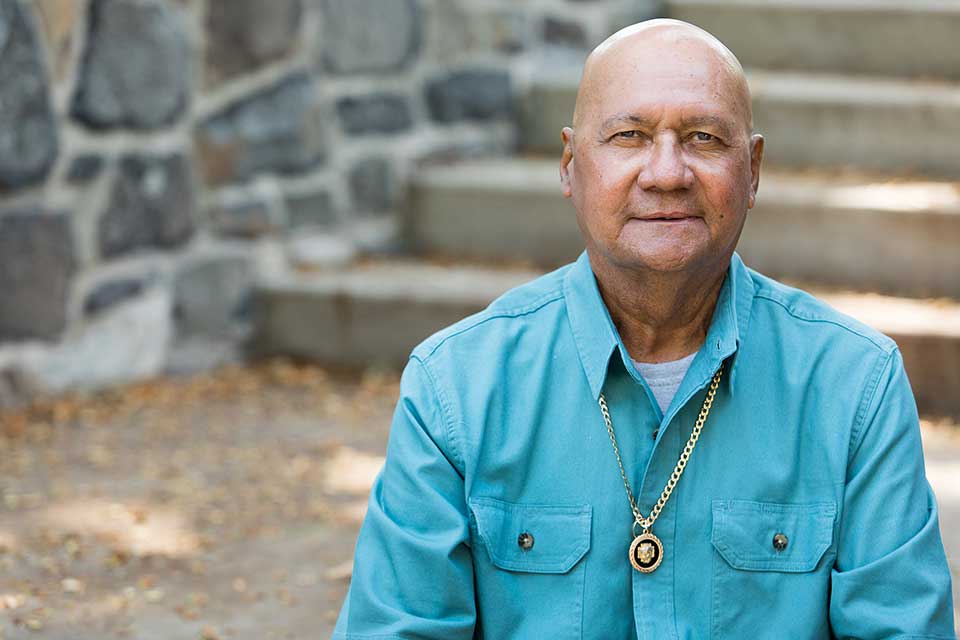How a Lung Transplant Can Breathe New Life into COVID-19 Patients Who Need It the Most

Courtesy of Temple Lung Center
In April 2020, Jorge Chavez and his family tested positive for COVID-19. While his wife and two daughters started to feel better after a week, Chavez’s condition began to deteriorate.
A month after contracting COVID-19, X-rays revealed he also had pneumonia, and he was put on oxygen. Over the next year, he struggled with shortness of breath, and simple tasks like driving became increasingly difficult. As his doctors examined the damage to Jorge’s lungs, there was only one option left: a lung transplant.
While researching regional transplant centers, his daughter, Yaimara, discovered the Temple Lung Center. The physicians at Temple are well established as the leading experts in the management of complex pulmonary conditions requiring transplantation. Through her research, Yaimara learned that the Temple Lung Center had experience in performing lung transplants on patients who suffer from severe scarring, or pulmonary fibrosis, as a result of COVID-19. Because these transplants are a high-risk procedure, few medical institutions are equipped to perform them.
But the Temple Lung Center was up to the task. Pre-COVID-19, the center performed close to 150 lung transplants per year, and after adjusting over the past year, it has returned to that number. And now, the Temple Lung Center has become the authority on lung transplants for COVID-19 long-haulers like Chavez, providing them with the possibility of recovery.
“I never thought this would happen to me,” Chavez says. “In my opinion, Temple Lung Center is the best hospital for treatment and patient care — I’m very grateful for all the doctors [at Temple].” Chavez says. “There was a time that my family was worried I was going to die, and now I feel very well. I feel very blessed.”
A Life-Saving Transplant
A lung transplant isn’t usually the first course of action for patients with serious lung diseases; it’s usually performed when all other options have been exhausted. That’s especially true with severe COVID-19 cases.
“Most of the transplants we perform, and that are done across the country, are for patients who are very sick,” says Dr. Nathaniel Marchetti, D.O., pulmonologist at the Temple Lung Center, and the medical director of Temple University Hospital’s Respiratory Intensive Care Unit. “Temple’s actually known for accepting more complex difficult cases, and when patients are turned down by other hospitals, they’re often referred to the Temple Lung Center for transplant.”
The Temple Lung Center has long been regarded as a preeminent lung transplant program in the U.S., performing more than 1,000 or combination heart and lung transplants since its founding. Temple’s criteria in evaluating lung transplant candidates includes those with high BMIs or who are older in age, and those with a variety of lung diseases, from emphysema to rarer conditions.
Temple typically has a shorter wait time to lung transplant compared to other regional centers, according to the Scientific Registry of Transplant Recipients. That’s evident in the case of Chavez, who received a transplant just nine days after being placed on a waitlist.
“We have a lot of experience treating complex pulmonary conditions — even before COVID — who might be intubated or on a ventilator,” Marchetti says. “These past experiences are what allows us to transplant these [post-COVID] patients.”
A New Lease on Life

Courtesy of Temple Lung Center
Ultimately, the Temple Lung Center hopes it can give each transplant patient a path forward to a healthy recovery. After a successful surgery outcome, breathing once again becomes second nature. And for Jorge Chavez, his year-long battle with shortness of breath and worrying if he would get better is finally over. He no longer uses oxygen, and simple tasks like driving and shopping are once again feasible.
“When a lung transplant works and it works well, it’s very rewarding to hear these [patient] stories,” Dr. Marchetti says. “They go from not being able to do anything to making it to family events or holidays they might be looking forward to.”
The Temple Lung Center is demonstrating its expertise and leadership as it continues driving life-changing treatments for patients like Chavez with the most complex lung conditions.
“What I went through was a very ugly experience,” Chavez says. “I wouldn’t wish it on anyone. But Temple and its doctors took great care of me, and now, after my transplant, my recovery has been a great success. I have no complaints.”
This is a paid partnership between Temple Health and Philadelphia Magazine